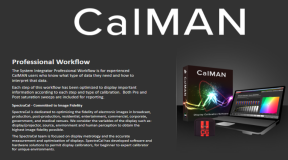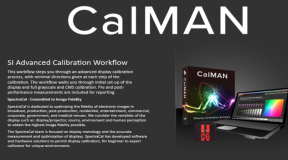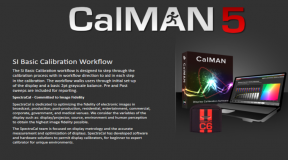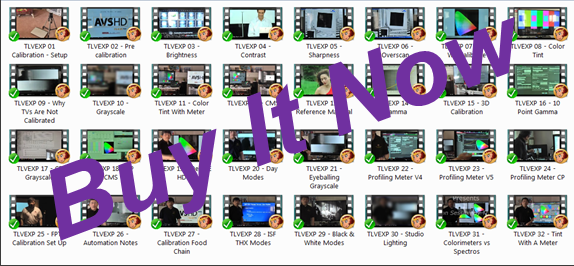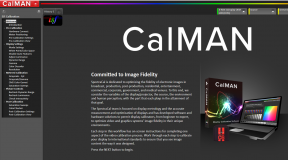Here is a not so kind story about what the ISF education program was really about and how it was sold to those who took the program. Selling hardware and software to the students. Problem was, only those that truly had a use for the equipment and understood it would buy their equipment. So how do they get more people to buy the equipment (both software and hardware) that they wanted to sell? Create a class that teaches people about how to use this equipment and present it to that “captive audience” in a manner that convinces them that it is easy to make money in this industry, however buying the hardware and software was a necessity. Human greed being what it was, if the argument could be made that it took only 60 minutes to calibrate a television set for a fee of $400, then suddenly people see dollar signs in their eyes and cannot wait to buy the equipment. This is where the class mantra “Work less, charge more” came from. They’ve since stopped using that phrase in class. It became a joke phrase that was attached to the program spoken by many calibrators that were concerned about what the ISF was doing wrong.
The instructor would commonly ask one of the assisting professional instructors what type of money they pulled in on a good day. That answer was usually in the range of $1000 to $1200 a day. When the class hears that, they fixate on that dollar figure, but what is not asked or mentioned is that the good day is often surrounded by two weeks on either side where there is little to no income. When taken in full context, the business in not nearly as lucrative as it is made out to be. The students never hear this part of the story. What is also left out is that the professional calibrator represents the best of the best in the calibration business too; the top 2% of calibrators. And so, with their name listed on the ISF website, all these calibration jobs would somehow just come forth. That was the promise, anyway. The reality of the situation turned out to be somewhat different for most people.
Things get even worse here because the people selling the hardware and software knew that they did not have the most accurate or best equipment on the market, but definitely one of the more expensive items available. More accurate hardware and software was actually available as well, but the people running the classes never permitted the competing products to be seen or discussed in the class. There is nothing inherently wrong with that, however, the classes were also promoted as being vendor neutral many times when that was never the case. So students were only exposed to one software and hardware option when they were most vulnerable at that stage … no time to even check into what their other purchase options might be. By the time the calibrator found out there were better solutions, they were stuck already financing $10,000+ in equipment. Do attendees bear some of the responsibility for not doing their own due diligence? Absolutely. Maybe they all deserved what they got because they let greed overcome them. People get conned all the time …
Is this business cutthroat or not? I was helping out one of the classes around 2004 when I specifically asked the head instructor, Joel Silver, who was sponsoring the class? In some of the previous classes, I was asked ahead of time not to talk about competitor software or hardware because they were sponsors of that particular class. I respected that and helped out under those conditions. But in this class, I was told that they were not sponsoring the class. On the second day, while I was leaving the washroom in the middle of Joel’s lecture, a student on the way out of the washroom as well stopped me and wanted an opinion about what his software and hardware options were … beyond what was being used in the classroom. I had access to four different types of calibration software at the time and I ran down some of his options. At this time, one of the hardware company representatives walked by and listened in on this brief conversation. Within 10 minutes of this brief conversation, he asked me to go into the hallway where he threatened to beat me up if I opened my mouth again and talked about any competitor’s offerings. He may have come to his senses about 15 minutes later when he apologized to me for what he had said. The damage was done. (He may have realized that at the time, I routinely wrote articles about the calibration industry and having me write about this might not be a good idea for his own future employment or the company he represented.)
The website may have indeed generated clients for the calibrators, but what the calibrators quickly found out was that the phone would ring once or twice a month if they were lucky and this $10,000 investment in hardware would take much longer to pay off. Since the people were only taught about the science of calibration and not the business aspect of calibration, their businesses full or part time failed within one to two years. For those lucky enough to get the one job or two each month, they quickly saw that the calibration work did not generate any additional business for them no matter how well the job was done. The hardware manufacturers are laughing at this point in time since they have already made their money on the sales of the equipment and whether the person succeeded in his calibration business or not, was inconsequential. There was also no additional support for the calibrators after they took the class from the ISF organization short of the listing on the website. There was no place where calibrators could talk to each other and share information and knowledge.
(A private calibrator site was established in 2003 by other calibrators and costs each member $100 a year and this is the equivalent to what is available for the THX calibrators for free because it is run by the same people. While the ISF has endorsed this site as a site for their calibrators, the name of the site is not even mentioned in the class so there is no way people can know such a resource actually exists for them. The total number or registered members on that site totals about 350. So it would seem that there are 350 calibrators that care enough about the business to share information and help each other out. This 350 out of 6000 number is less than 10% of all the ISF calibrators out there.)

